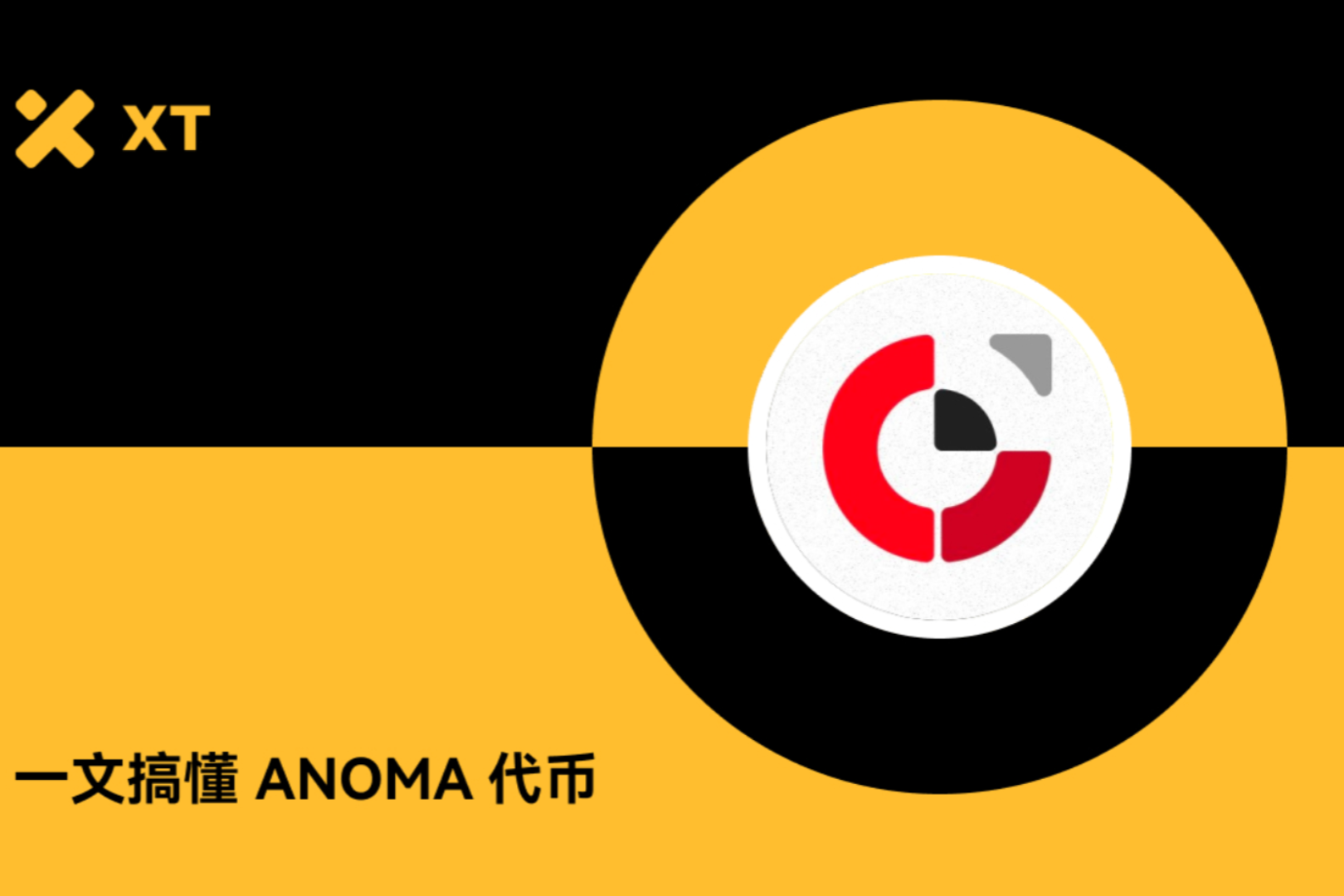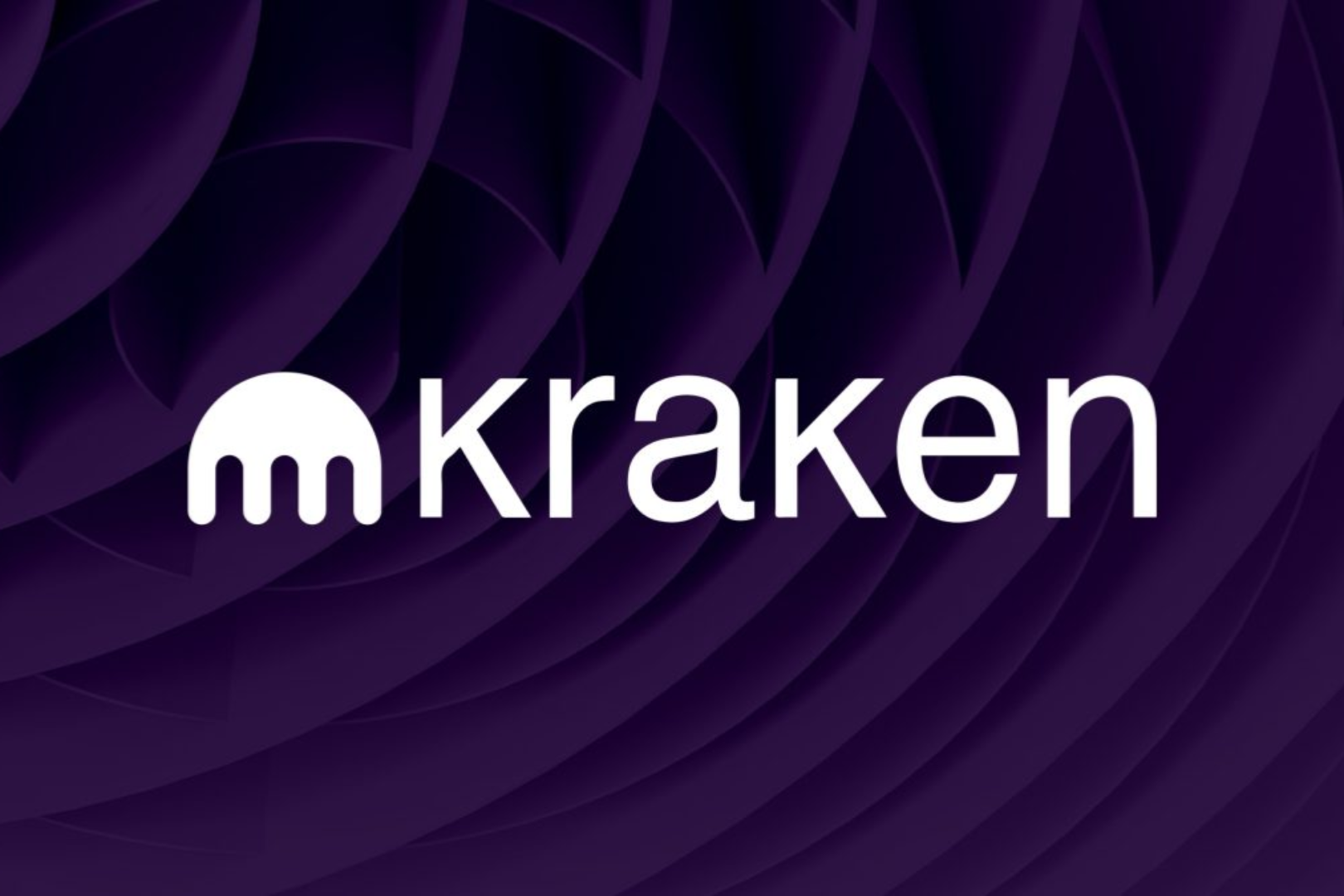
Summary
Applying quantitative investment methods to invest in the digital currency market is a common model in recent years. The characteristics of the digital currency market, such as large fluctuations, 7*24 hours of continuous trading, many opportunities for pricing deviations, and market-making needs of exchanges, are the natural soil for quantitative trading. Many traditional quantitative institutions have entered the market, but limited by the characteristics, scale and corresponding infrastructure of the digital currency market, the scale of quantitative strategies with relatively strong profitability is still small.
This article compares all types of quantitative investment strategies and categorizes them into active and passive. In the active type, the trend strategy and the volatility strategy are the two main types of strategies.
Most strategies can be applied in the digital currency market, and the digital currency market also has its own unique arbitrage methods. Passive management and index enhancement are gradually emerging in traditional markets, and digital currency transactions can learn from their ideas. In addition, here we briefly classify the risks faced by digital currency quantitative investment and the risk control methods required for a mature quantitative strategy, and list the infrastructure and necessary modules required by the quantitative trading platform.
In addition, assessing the strength of a quantitative team needs to start from many aspects. The strategic level is generally highly confidential, and can be dynamically examined from the team background, structure, risk control and compliance, and various indicators.
first level title
secondary title
1.1 The rise of quantitative investment
The rise of quantitative investment is inseparable from the development of mathematical finance. The mean-variance model established by the American economist Markowitz in the 1950s can be said to be the beginning of quantitative investment. Then in the 1960s, William Sharpe and other four people in modern investment Based on Portfolio Theory (MPT), the Capital Market Pricing Model (CAPM) has been developed, which has become the basic model for measuring financial risks and returns. Another noteworthy direction is the efficient market hypothesis developed by Fama et al. in the 1960s, and its influence continues to this day. In addition, Fama and French also developed a three-factor model in the 1990s, which became the beginning of the later factor analysis model.
With the continuous development of derivative products, American economists Black and Scholes established the option pricing model (BSM model) in the 1970s, which was quickly applied to the financial market to help the rapid development of financial derivative products, which in turn promoted Mathematical theory of finance has taken a big step forward.
In the 1980s, the concept of "financial engineering" was proposed, forming a new discipline form and beginning to widely absorb and research related achievements. The most important progress in the 1990s was the direction of financial risk management. The VaR risk management model has been widely used and has been widely used by financial institutions around the world. It is one of the most important risk measurement matrices.
The history of China's quantitative investment is not long, and it has only developed for about 10 years, which is related to the return of overseas quantitative talents and the start of the derivatives market. In the past decade, passive investment has developed simultaneously with quantitative funds. Passive investment was not considered a quantitative category at first, but the emergence of ETF products requires quantitative means, especially the index enhancement or Smart Beta products that have appeared in recent years, which decompose various influencing factors based on the original index , and reconfigure assets, requires strong quantitative platform support.
secondary title
1.2 The digital currency market is suitable for quantitative investment strategies
The characteristics of the digital currency market are very suitable for the use of quantitative strategies because of:
The volatility of digital currency itself is much greater than that of traditional financial market products, and it is suitable for a variety of quantitative investment strategies that sell volatility.
The market development is relatively early, and the products are very preliminary, such as futures and options products, which have low liquidity, poor pricing effectiveness, and many opportunities for mispricing. Quantitative investment can well capture the opportunity of pricing deviation.
Long trading hours and 7*24 hours of trading are not suitable for manual tracking and trading, but are more conducive to taking advantage of the quantitative system's advantages in tracking, early warning and capturing trading opportunities.
Exchanges also have market-making needs. There are many digital currency trading pairs, but the liquidity is difficult to match. Most exchanges have liquidity needs, which also leads to the necessary role of the exchange ecology as a market maker, which is also the means for most quantitative teams to survive one.
first level title
Binary Quantitative Strategy Classification and Digital Currency Market Application
Quantitative investment is also divided into active and passive types. The active type pursues absolute returns and pursues a structure that can obtain excess stable returns under any market conditions by assuming various risk factors. Most of the digital currency quantitative investment strategies are based on active investment. Mainly.
The quantitative strategy of passive investment mainly pursues the return similar to various indexes, and bears the systemic risk of the market and various sub-sector or style risks in order to obtain the allocation return. In recent years, the index-enhanced quantitative strategy that has added factor analysis has gained favor , traders can increase exposure to a certain type of risk to obtain returns that exceed the index.
secondary title
2.1 Overview of active quantification
Active quantitative investment strategies are basically divided into two types: trend type and fluctuation type. Because whether it is the traditional financial market or the digital currency market, the market trend can be decomposed into two types, one is the trend market, and the other is the volatility market. The rest of the trends can be seen as the superposition of these two types of trends. The significance of quantitative strategies is to seize unilateral opportunities in trending markets and find unreasonable pricing opportunities in volatile markets.
No matter what type of strategy is adopted, it is important to judge whether it is a trending market or a fluctuating market. According to statistics over the years, the performance of quantitative hedge funds in the bull market is worse than that of long-only funds or long-short funds, and they can outperform the latter two in volatile or bear markets. The reason is that under different market conditions, the contribution of various income The proportion varies greatly, so judging the market conditions is the first.
secondary title
2.2 Active Quantification Strategy
2.2.1 Trend strategies
Trend judgment is mainly to judge what kind of market is currently, whether it is up or down, and what kind of target is more suitable for such a market. If the judgment is wrong, the risk is very high, but the corresponding profit is also great if the judgment is correct.
Quantitative stock selection (coin)
quantitative timing
Quantitative stock selection (coin)
Quantitative stock selection or currency selection is to construct a series of target (long-short) combinations, whether it is stocks or currencies. There are many types of quantitative stock selection (coins), and the most widely used is the multi-factor model. Its basic principle is to disassemble the factors that can constitute the rise and fall of the underlying object, which can also be called factor analysis.
That is, when constructing a portfolio, it is not classified by the subject matter itself (for example, how much weight is assigned to a certain industry), but by factors, and how much weight is given to a certain type of factor. Of course, stocks and digital currencies are also different, and there will be more factors in stocks, because many fundamental factors are involved, factors such as digital currency sentiment (such as Twitter discussions) or event-driven types (halving, major upgrades, cooperation) factors More, but the key is to find the right factors to simulate and backtest.
It is easy to make mistakes, such as assigning too many weights to some seemingly important but actually unimportant factors, which increases the risk, so the validity of the factors needs to be tested.
Common factors for stocks include: valuation, growth (such as net profit growth rate), capital structure (such as foreign ownership), and momentum. Turnover rate, capital inflow, industry rotation, etc.
Common factors of digital currency include: market value, trading volume, momentum, social platforms (number of discussions, follow volume), special events (upgrades, listing on Coinbase, etc.), macro liquidity, etc.
It can be seen that fundamental investment actually has something in common with quantitative investment. Using quantitative methods to invest in fundamentals is also a favorite strategy of some A-share fund managers. Even fundamentals themselves, as long as they are based on data, can also be counted as A type of quantification. Some other quantitative stock selection models include models such as style rotation, industry rotation, and capital flow. Some of them can also be unified under the multi-factor model, so I won’t go into details here.
quantitative timing
Quantitative timing is a method of estimating the trend. In fact, it can also be regarded as a type of factor analysis. It uses the judgment of the market direction as the main source of profit, but it is also risky.
Quantitative timing originally comes from the analysis of relatively simple technical analysis methods (such as moving averages, volume energy, etc.), and is generally divided into trend timing indicators, market sentiment timing indicators, bull-bear line indicators, market abnormal indicators, and some special indicators. The method by which the adjustment is made (time-varying Sharpe ratio, fractal method, etc.).
2.2.2 Volatility strategies
Volatility strategies are attempts not to bear systematic risks, no matter whether the system is up, down or fluctuating, it is hoped that systemic risks will be excluded. For example, the famous alpha strategy is to hedge the beta of the system risk through derivative products, and the rest is only the income of individual stocks, individual coupons, and individual coins. Volatility strategies still cannot outperform long-term funds in a bull market, while bear and volatility markets can obtain excess returns, which is a long-term stable method.
Derivatives arbitrage (futures, options)
statistical arbitrage
Arbitrage unique to digital currency
Derivatives arbitrage (futures, options)
This arbitrage method can be used on products with relatively developed derivatives markets. For futures, there are two types of spot arbitrage and intertemporal arbitrage. For example, buy low-priced spot goods in the spot market and sell high-value futures in the futures market to obtain profits from price returns. The basic basis is that the futures price will return to the spot price on the settlement date. Spread arbitrage is the arbitrage between the purchase and sale of futures with different maturities. It can be seen that the arbitrage of futures is a market-neutral method, which requires the market to fluctuate continuously to generate opportunities for pricing deviations, and it is difficult to generate arbitrage opportunities in a stable market.
For options, the situation is more complicated than that of futures, because the income structure of options is not linear compared with the price of the underlying object, so according to different types of option combinations, many complex types of arbitrage models can be constructed. In the traditional market, according to the income The structure diagram gives very vivid names, such as butterfly arbitrage, flying eagle arbitrage, straddle arbitrage, conversion arbitrage, vertical arbitrage, horizontal arbitrage, reverse conversion arbitrage, double limit arbitrage, etc. At present, the option market of digital currency has just been developed for about two years, and the transaction volume is still small, concentrated in large exchanges such as Deribit and CME, but there is no doubt that options will be a large potential market.
statistical arbitrage
Statistical arbitrage refers to the discovery of the corresponding long-term equilibrium relationship (co-integration relationship) through research on the historical statistical laws of related investment targets. , sell upward deviation, or even only unilaterally operate, and take profits after the return of the long-term equilibrium relationship. The target of statistical arbitrage can range from the simplest pair transaction (between two targets) to a series of target investments. The key is to find out the co-integration relationship between the targets.
For example, in the digital currency market, someone has done a pair transaction between Litecoin/Bitcoin and Ethereum/Bitcoin, which is to calculate the long-term historical average of the ratio of a pair of digital currencies, and then buy the undervalued one. If you can short , sold in the derivatives market, and finally in order to obtain the return of value.
Arbitrage unique to digital currency
What is introduced here is the unique arbitrage model of digital currency, that is to say, the existence of such arbitrage opportunities only exists between digital currency exchanges or digital currency trading pairs. Of course, these models have also appeared in other products, such as the triangular arbitrage of foreign exchange, but they have been applied to digital currency transactions, and they are also included in the unique arbitrage model of digital currency.
Cross-exchange arbitrage
In the early days, the prices of the same trading pair on different exchanges were inconsistent and continued to exist, so it was possible to sell on a high-price exchange and buy the same trading pair on a low-price exchange to make a profit.
For example, a digital currency listed on both exchanges can be operated on both sides at the same time. For example, if a trader has ETH on exchange A and BTC on exchange B, and the price of ETH/BTC on exchange A is higher than that on exchange B, he can sell ETH on exchange A to obtain BTC, and the transaction on B will be successful. BTC buys ETH, which can avoid transfer fees between exchanges, and then both ETH and BTC have achieved simultaneous growth.
Arbitrage of multiple digital currency pairs on the exchange
It is necessary to have multiple digital currency pairs in the exchange, and each other is the price currency and the price currency, such as BTC/USDT, ETH/USDT, ETH/BTC three pairs. At a certain moment, there will definitely be inconsistencies. When calculating After the handling fee, triangular arbitrage can be carried out, selling higher ones and buying lower ones.
For example, BTC/USDT=8000, ETH/USDT=200, ETH/BTC=0.2542, obviously ETH/BTC is overvalued, then you can sell ETH/BTC and buy ETH/USDT at the same time, so that the basis of ETH and BTC The position is roughly unchanged, but the amount of BTC has increased. Or, buy ETH with USDT, sell ETH/BTC, sell BTC/USDT after getting BTC, buy ETH with USDT, and repeat.
The above cross-exchange arbitrage is combined with the arbitrage of multiple digital currency pairs in the exchange to carry out cross-exchange triangular arbitrage, but it is more complicated, because factors such as transfer fees, transfer time, and the survivability of trading opportunities must be considered. Cross-pair triangular arbitrage originated in the foreign exchange market, but there are many participants in the foreign exchange market, and there are few arbitrage opportunities. In the early years, there were many trading opportunities for digital currency arbitrage, but now they are starting to decrease, because more and more people are quantitatively arbitrage.
Fiat currency trading pair arbitrage
This is a triangular or multi-corner arbitrage model combining foreign exchange and digital currency. When there is a price difference between different legal currency trading pairs, such as BTC/JPY, BTC/KWR, and JPY/KWR, cross-digital currency and foreign exchange can be carried out. arbitrage.
secondary title
2.3 Classification of passive quantification strategies
asset allocation
asset allocation
2.3.1 Passive investment (including index enhancement)
Passive investment is actually index investment. There is no recognized index in the digital currency market. Most of the indexes are compiled by various companies themselves, lacking consistency and recognition. The market value of Bitcoin still accounts for more than 60%, and the compilation of a large-scale index is just to configure the top few digital currencies according to certain weights. The gains from the market are mainly from Bitcoin.
Exponential enhancement is another interesting direction, but it is not very practical for the digital currency market at present. For example, relative return is a very popular concept, which is relative to the return of a large market index. Now there is no large market return index for digital currency, so it is of little significance.
What we can learn from is that through a relatively reasonable basket, adding our subjective judgments and factor adjustments, we can obtain a combination with higher returns than Bitcoin but more stable returns than altcoins, and then maintain the balance of returns by continuously adjusting positions. stability. But it still depends on what kind of benefits we want to achieve.
Index investment or index enhancement is still a trend investment, and the basic logic is that the digital currency market will rise in the future.
2.3.2 Asset Allocation
Asset allocation is a concept that has emerged in recent years. It is mostly used in traditional cross-asset class investment, such as reverse in stocks, precious metals, futures, fixed income, money market funds, etc., methods such as equal weight investment, all-weather investment, etc.
In fact, digital currency can become a new type of allocation in all-weather investment. For example, it divides the economic cycle into four quadrants according to growth and inflation. Each quadrant allocates a series of most beneficial assets. Digital currency can become one of the currencies in this package. part. However, due to the higher risk, the weight will not be too large.
secondary title
2.4 Algorithmic Trading
Algorithmic trading was also born in the United States and is inseparable from the digitization of financial markets. In the 1970s, a large number of exchanges began to use the computer system to automate the entrustment order flow, so that each transaction order can be captured by the computer program, so as to obtain the order time, price, quantity, etc. Aspect information provides the most important data source for algorithmic trading. The rise of algorithmic trading has enabled a large part of market orders to be executed according to algorithms, which has also significantly improved the efficiency of market information dissemination.
The core of algorithmic trading lies in the dismantling and analysis of exchange orders and the effective assessment of the state of the market, so as to continuously adjust the algorithm and reduce the time cost and impact cost. The main strategy of algorithmic trading lies in the analysis of order price, transaction volume and cost. General strategies include several common types such as TWAP, VWAP, MVWAP, VP, Step, and IS.
The use of algorithmic trading in China's capital market started late, but the electronic trading system is very advanced, but there are some backwardness in related technical research and market systems, which is not conducive to the development of algorithmic trading, and there are some restrictions in supervision.
first level title
secondary title
3.1 Risk classification
There are two types of risks in applying quantitative investment to the digital currency market:
One category is digital currency risks that all types of investment strategies must face, such as market risk, tail events, liquidity risk, etc.
market risk: The volatility of digital currency itself is not only a source of profit, but also a source of risk. Since digital currency lacks financial fundamentals, has no interest, and has no expected cash flow, the valuation is completely priced by expectations and liquidity, which is more volatile than general financial products. Derivative products based on digital currency continue to amplify this fluctuation several times. At present, most of the futures and options markets are based on Bitcoin, and a small part is based on Ethereum. There are almost no derivatives of other currencies, because the risk is too high and the exchange may be difficult to manage.
tail riskliquidity risk
liquidity risk: It has been explained above that liquidity is one of the pricing sources of digital currency. Gold itself is a liquidity pool, and Bitcoin is slowly developing into a liquidity pool. However, due to the small market value, it is easily disturbed by liquidity compared to gold, and it also has the characteristics of risky assets. A typical example is the plunge of 3.12 and the rapid rebound after the plunge. The main reason is liquidity, and the secondary reason is risk preference. In addition, the liquidity of many digital currency trading pairs is also unstable. The trading pairs and trading rules of different exchanges are slightly different, which greatly interferes with the liquidity of small currencies.
The other type is the unique risks of quantitative investment strategies, such as quantitative model design risk, data integrity risk, hardware failure and other out-of-market black swan risks, the relationship between model fitting, backtesting and the future (changes in market conditions), over-the-counter Fitting and other types of risk can be divided into two categories:
It is empirical, such as the strategy is not smart enough, the backtest is not in place, the fitting is not done well (such as overfitting), there are problems with the parameters, and the basic model lacks proof support, etc.
secondary title
3.2 Risk Control Measures
3.2.1 Strategic Risk Control
Strategy-led multi-indicator risk control principles
The strategy model is a complete set of procedures responsible for placing an order to closing a position. Most of the strategy models include the risk control module, such as when to stop loss and when to stop the strategy.
This part of the model is directly under the responsibility of the quantitative strategist. Various indicators among them need to be negotiated with risk control and other departments.
In addition, there is an upper limit to the risk that a team can basically take. When using a multi-strategy model, a single strategy needs to be assigned risk indicators. Therefore, the strategy model has many external restrictions, and these can be internalized into multiple indicators. Risk control program.
Advanced Algorithm Filtering
In addition, some quantitative teams also set up independent algorithmic risk control, such as using natural language processing NLP, relational network, knowledge graph and other technical means to find and outline risks that are not obvious in the market but have substantial impact .
It is equivalent to setting up an algorithm-led risk control monitoring system outside the strategy and trading department, responsible for monitoring the overall risk exposure and communicating with the strategic trading team.
Risk control warning and log
Pre-warning belongs to front-end risk control, that is, general risk warning, warning line, liquidation line prompt, etc. The log belongs to the post-positioned risk control, which records risk events and risk control events for future reference, and facilitates the improvement of risk control and strategy models.
3.2.2 Compliance Risk Control
Traditional financial markets, such as A-shares, require the number of times orders are placed, the number of cancellations, and the time difference between order placement and cancellation. It is expected that the compliant digital currency trading market may have similar requirements in the future, such as what types of digital currency can be traded or not. This requires modification of strategy models, especially high-frequency trading models, to comply with regulatory requirements.
3.2.3 Manual intervention in risk control
It mainly refers to strategy start and stop, manual order placement, system emergency braking, and various artificially defined risk control rules. The purpose is to prevent black swans from appearing in strategies, especially automatic trading types. Historically, for example, in 2012, Knight Capital sent a large number of orders within 45 minutes due to the lack of a prompt module after the automatic order distribution system was upgraded, resulting in a loss of 460 million US dollars. This is a situation that requires human intervention.
first level title
Infrastructure and trading platform for quantitative investment in four digital currencies
We believe that quantitative trading requires at least the following five types of infrastructure:
Trading venues: spot exchanges, derivatives exchanges, OTC exchanges, and prime brokers
Trading products: various digital currency trading pairs, digital currency futures, digital currency options
Digital currency management system: including hot and cold wallets, custody, insurance, etc.
Fiat bank channel and fund management system
Quantitative trading system
Data API interface: including real-time exchange data, on-chain data and other macro data
Database: historical market database and other types of historical database
Monitoring system: capture market data and special events
Backtesting platform and simulated trading platform: historical and real-time verification of strategies
Strategy development platform: You can develop strategies by yourself or use a mature strategy development platform
Multi-account management system: multi-account fund management, risk weight distribution
Core module: quantitative strategy trading engine
Trading system: order sending, execution, transaction report
The development steps of the trading platform:
image description
first level title
Five Quantitative Team Evaluation Methods and Industry Patterns
Quantitative strategies are relatively secretive. How to evaluate and establish evaluation criteria for quantitative teams is a very complicated task. Quantitative strategy is like the secret recipe of the food industry, secretive and mysterious by the industry.
Performance selective disclosure. The survival line of the quantitative team lies in the leading quantitative strategy, and its disclosure is generally limited. The myth of quantitative teams seen in the market also has selective disclosure. For example, although the Medallion Fund (internal employee fund) established by mathematician Simons has the best returns, other subordinate funds with external investors have performed mediocre.
Some funds make a lot of money in a certain year, but then disappear in the industry, so there are very few funds that are built to last, no matter quantitative or non-quantitative.
Don't put too much emphasis on the team background. Evaluation only based on the team background will also encounter unexpected situations. The most famous example is the failure of the long-term capital management company LTCM, which is a precedent for the bankruptcy of a Nobel Prize-level quantitative company.
A variety of indicators are matched. There are also problems when looking at performance. Performance is backward-looking, and there is survivorship bias. Previous performance does not represent future performance. There is a certain element of luck in how the assessment is done.
Especially when participating from the perspective of external investors, it is difficult to understand a single module and the linkage characteristics between various modules, even with the help of code audit. In addition, indicators for measuring risk control such as the maximum retracement, Sharpe ratio, and Sortino ratio also need attention.
Dynamic evaluation. Therefore, to evaluate a good quantitative team, we must first look at the problem dynamically, and we cannot rely solely on performance. The returns of different strategies in different markets vary greatly, and there is also a certain element of luck (or a part that is difficult to describe mathematically).
So you need to be objective and keep track. Every company will claim that its risk control module is complete, but until a risk event occurs, it is not known who has the best risk control.
According to our understanding of the industry, there are currently two types of strategies that are most profitable in digital currency quantitative investment:
Market maker strategy: At present, the strongest team in digital currency quantitative trading comes from traditional quantitative funds. Their main strategy is the market maker strategy, that is, by providing liquidity on different exchanges and completing positions on other exchanges cover, taking advantage of the price difference between spot exchanges and the advantage that its own trading engine can instantly capture opportunities, the strategy volume is relatively large.
High-frequency trading strategy: This type of strategy is characterized by a small plate capacity, but relatively stable income, and the annualized rate of an excellent team can reach more than 30%-40%, but expansion requires the market value of the overall digital market to go up one step further. The origins of these teams are also traditional quantitative funds.
first level title
secondary title
6.1 Tool limitations
Financial instruments are the basis for quantitative trading. Quantitative investment is closely related to the richness of financial instruments. With more financial instruments, there are more quantitative methods to choose from.
Assuming that only one spot market is used to carry out purely quantitative transactions, only trend judgment strategies can be used. On the contrary, those strategies that like to judge volatility have no way to work at all.
The futures exchange Bitmex launched perpetual futures contracts in 2016, CME and CBOE only opened futures in 2017, and the largest options exchange Deribit was established in 2018. Spot exchanges followed suit later, adding futures and options products one after another. Without these exchanges and derivative products, spot risks cannot be hedged, and futures risks cannot be hedged either. Therefore, quantitative trading requires corresponding trading venues and tools.
In the A-share market, for example, after the stock market crash in 2015, the supervision of stock index futures began to increase, such as increasing restrictions on opening positions and increasing handling fees for closing positions, etc., all of which led to the lack of the most important means of hedging systemic risks.
secondary title
6.2 Market Size Restrictions
Quantitative strategy capacity is limited because of the limited size of the market itself. If the quantitative strategy is too large, it will disturb the market itself, resulting in lower trading profits.
For example, futures or intertemporal arbitrage, the recent transactions in the futures market are generally better than the forward transactions, so the strategy of capturing the price difference must be adapted to the transactions of forward futures. Once this limit is exceeded, it becomes a unilateral risk exposure in the near future. .
secondary title
6.3 Competitive Behavior
An effective strategy, the fewer people who probably know about it, the better. The same type of strategy will also produce widely different effects for different parameter selections. For the same market opportunity, the more people arbitrage, the less profit they can get.
secondary title
6.4 Various strategies will fail in the face of extreme markets
Strategies can also fail under extreme market conditions. For example, under extreme conditions, the market neutral strategy may shift the neutrality and become a one-way risk exposure. For example, when futures cannot find a counterparty to open or close a position, the seemingly neutral strategy may become a trend strategy.
first level title
Seven Digital Currency Quantitative Investment Outlook
This report initially introduces the development context and characteristics of quantitative investment, and makes a brief analysis based on the status quo of quantitative investment in digital assets.
Traditional fundamental investment is a kind of more detailed guiding principles. Its large framework and detailed indicators are relatively mature. What needs to be changed is the inclusion of emerging industries. The quantitative investment strategy is the sum of a large category of investment strategies, rather than specific guiding principles. Its various subdivisions are in the process of continuous evolution, and there is no quantitative strategy that can conquer the world and is effective for a long time.
Although quantitative investment strategies have formed a relatively fixed category of principles, the gap between theory and practice is also huge. Its characteristic is that there will be constant addition of new content, and outdated strategies and algorithms will be eliminated, while the cutting-edge strategy (the part with the highest income) is always a black box of some top quantitative teams and cannot be fully understood.
Another direction worth observing is that subjective investment and quantitative investment are in the process of integration, especially traditional stock investment.
One is that if there are enough researchers in the market to rate a subject matter, they can be sorted by quantitative methods, turning a subjective rating signal into a quantitative signal;
The second is that in the factor model, there are also many fundamental factors. Of course, the subjective judgment of researchers can even be added as a certain factor.
In fact, subjective investment often uses quantitative methods, such as sorting and attribution according to various fundamental indicators, so it is also learning from each other. In the future, this kind of integration can also happen in the digital currency market.
The reason why digital currency is suitable for quantitative investment has been mentioned above. The cross-exchange arbitrage in the early stage of the industry is an example of the effectiveness of the quantitative strategy period. The main reason at present is that all the liquidity is scattered in different pools, so the arbitrage between spot and spot will continue to exist.
In the future, quantitative strategies will have a greater prospect of acting on digital currencies because of:
The scale of derivative products such as futures and options will be very large, which will come from the subjective needs of various people, such as hedging for miners, profit for traders, project treasury management, financial service needs, etc.;
The scale of the digital currency market still has a lot of room for improvement. When it grows to a certain extent, more types of derivative products will appear, and as it matures, fundamental investment may gradually become one of the mainstream investment methods, making factor analysis There can be better usage scenarios;
It has been seen that many traditional quantitative teams have entered digital currency, which provides new ammunition for the overall less "professional" digital currency quantification, and catfish spoilers will prompt quantitative teams to continuously improve their level.
The high volatility of digital assets will last for a long time, and the profit space is large enough until its mainstreaming is completed.
about Us:
about Us:
HashKey Group is a financial technology group based in Hong Kong, founded by senior financial and technical experts. The management team is mainly from leading financial or technology companies, such as UBS, BNP Paribas, Ant Financial, HSBC, JPMorgan Chase, etc. Mr. Li Qitai, CEO of the Group, has 25 years of experience in investment banking and once served for UBS. The chairman, Dr. Xiao Feng, is also a senior practitioner in the financial field and blockchain industry. The group includes companies such as Hashkey Hub, HashQuark, HashKey Trading, Tokyo Hash, and HashKey Capital, which are oriented to different segments and directions.
Hashkey Hub is a one-stop digital asset management platform where users can store, trade and grow their own digital assets in the Hub. The positioning of HashKey Hub is the bridge for the public to the blockchain world, and it is also the ecological entrance of the entire HashKey Group. Currently, users can use the staking service connected to HashQuark for Pos mining to achieve asset growth; at the same time, they can also use the staking service connected to HashKey Trading Aggregated trading services, one-click price comparison, and fast transactions at the best price; in the future, more exclusive blockchain services such as Defi, Web 3.0, etc. will be provided, so stay tuned!





